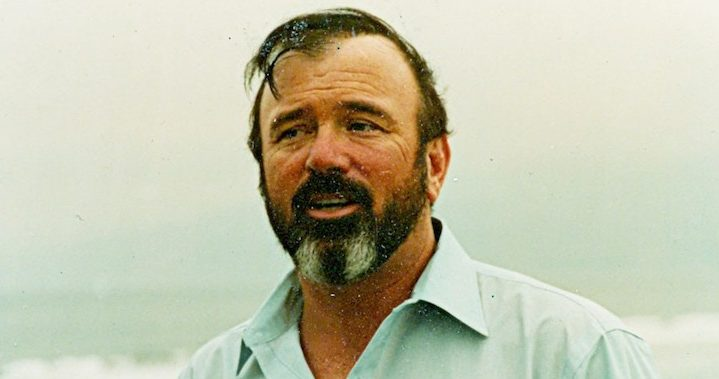The Highest-Paid Copywri…

Metadata
- Author: @dickiebush on Twitter
- Full Title: The Highest-Paid Copywri…
- Category:tweets
- Published Date: 2021-07-27
- URL: https://twitter.com/dickiebush/status/1419816281130344451
Highlights
- The highest-paid copywriter in history: Gary Halbert.
His legendary sales letters generated over $1,000,000,000 in revenue.
And in one of his very last letters, he shared 12 time-tested strategies for writing better copy, faster.
Here’s a breakdown of each one:
 (View Tweet)
(View Tweet) -
- Set up a proper writing space Gary was a big fan of writing anywhere. • His desk • Local bar • Bookstore • Coffee shop The location didn’t matter. But he made sure to stick with the same one for long stretches. The goal was to signal to his brain “it’s time to write.” (View Tweet)
-
- Set up a writing routine “I write when I’m inspired, so I see to it I’m inspired every morning at nine o’clock.” ~ Peter De Vries Time: the first thing you need to write well. But the best writers don’t find time to write. They make time to write. https://t.co/zORePxKLmt (View Tweet)
- Gary was big on writing first thing in the morning. So before bed, he would scribble down notes on four questions: • What’s the big idea here? • What’s my product’s biggest benefit? • What’s most exciting about this product? • What emotion am I trying to create. (View Tweet)
- Then, he went to bed and let his subconscious do the work for him. Like clockwork, he would wake up with a clear answer to each question. And then, time and time again, he would write a legendary sales letter that would generate millions in revenue. (View Tweet)
-
- Write. A LOT. Gary says there’s no shortcut. And he’s right. The more you write, and the more often you right, the better you will become. Because no one has 100 bad pieces of writing. They either have 10 and quit, or do it long enough to figure it out. (View Tweet)
-
- Write for set time periods. Gary was big on the Pomodoro technique. He set a timer for 33:33. And his rule was simple: he could do anything he wanted during that 33:33. Except get out of his chair. (View Tweet)
- And this took the pressure off writing. Most times he’d stare at the wall for the first few minutes. Sip his coffee. Think about how many other things he’d rather be doing. But then, someway or another, he’d start writing. And the timer let him know the torture would end soon. (View Tweet)
- During his breaks, he would walk around, have a quick snack, and do anything else but write. And during this time, inspiration always struck. Then, at the end of the day, he wouldn’t say to himself “I wrote until I got tired.” He would say “I wrote for six sessions today.” (View Tweet)
-
- Write something easy, first. When Gary wasn’t feeling it, he would practice copywork. He had a go-to list of great sales letters he would copy word for word to get warmed up. I didn’t believe this would work at first. But it’s now my go-to way to get the juices flowing. (View Tweet)
-
- Allow yourself to create junk. For every great sales letter, Gary wrote 20 crappy sales letters. His reminder: “In this history of written communication, nothing has ever been published that is 100% perfect.” And @JamesClear has a similar rule: https://t.co/P3RMSIlswk (View Tweet)
-
- Create an idea capture system Gary’s system was epic: back in the day, if you wanted to capture an idea on the go, you an 866 number. That number would record his call for 60 seconds, then email him a transcription. Now, we have better tools: https://t.co/9Xhv1aa89N (View Tweet)
-
- Specialize in something Writers that go nowhere: They try to be everything for everyone on every platform, all the time. You need constraints. • Time • Topic • Length • Medium • Platform • Cadence Here’s how to leverage them: https://t.co/l9tbAORUS6 (View Tweet)
-
- Reward yourself
Humans are simple dopamine chasers.
But amateur writers get dopamine from notifications.
Professional writers get it from hitting publish.
The easiest way to do this?
Print out a giant calendar.
And make a big red X every day you write and publish.
 (View Tweet)
(View Tweet)
- Reward yourself
Humans are simple dopamine chasers.
But amateur writers get dopamine from notifications.
Professional writers get it from hitting publish.
The easiest way to do this?
Print out a giant calendar.
And make a big red X every day you write and publish.
- And that’s it! These are the 12 steps Gary used to build his writing practice. As for his actual copywriting techniques? Stay tuned for the next thread. (View Tweet)
- If you enjoyed these:
- Follow me @dickiebush for more threads like this on building a writing habit.
- Hop back up to the top of the thread and share it with others 🙏🏼 https://t.co/cVCUH5UmC0 (View Tweet)
- Gary Halbert’s writing system: • Write, A LOT • Reward yourself • Capture your ideas • Build a writing routine • Set up a writing space • Specialize in something • Write for set time periods • Write something easy, first • Allow yourself to create junk (View Tweet)
- And if you’re looking for a crash course in building a writing habit, here’s a free 10-day email course that will get you there, fast. https://t.co/zuwL7mDzev (View Tweet)
- I also highly recommend picking up a copy of The Boron Letters. It’s the only book I’ve ever read on copywriting, and it taught me everything I needed to know. https://t.co/7eDDAJS4R9 (View Tweet)
- And if you want to go all the way down the rabbit hole, here’s every thread I’ve ever written about building a writing habit and writing effectively: https://t.co/EZja7jy6Sk (View Tweet)
- Want to start writing online but don’t know what you’ll write about? This webinar is for you. Happening today at 5:00 PM EST. https://t.co/yFQP9gRXzq (View Tweet)